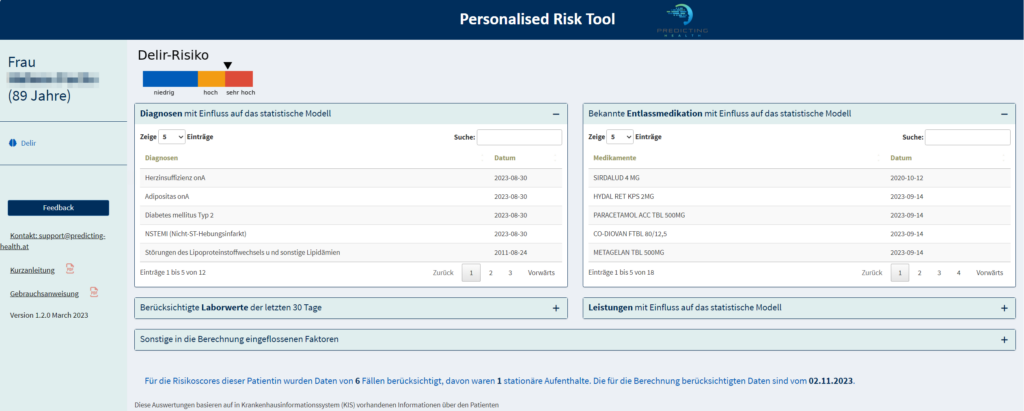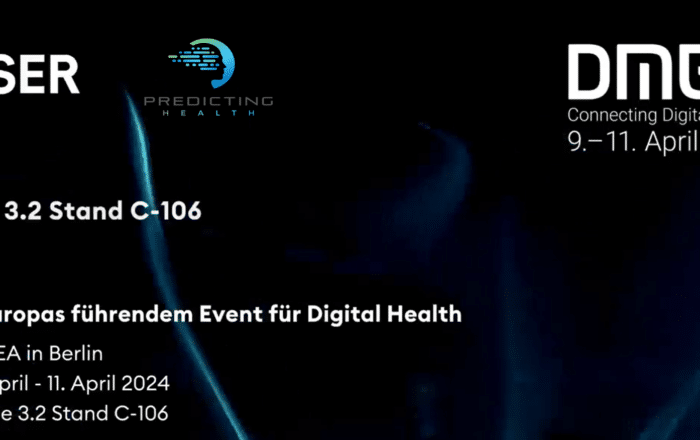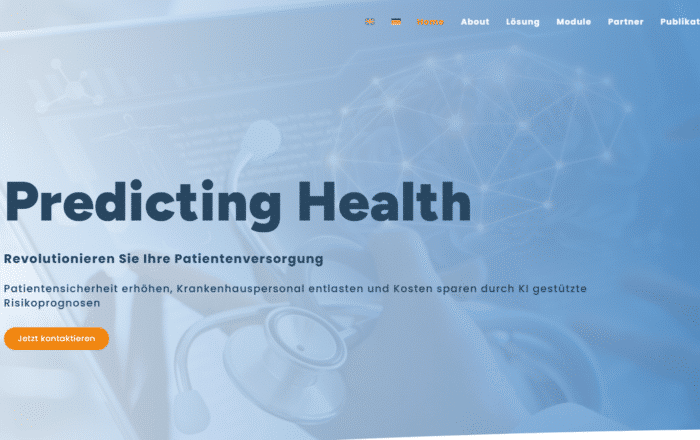Predicting Health and SER Group @DMEA 2024
Join Predicting Health at DMEA 2024 in Berlin to discover groundbreaking healthcare solutions through AI and unstructured data analysis, enhancing predictive accuracy for personalized patient care.
MoreDeveloped from clinical practice
Predicting Health stands for a revolutionary development in medical risk assessment, realized through close and targeted collaboration with doctors and nurses.
Our approach combines advanced machine learning technology with a deep understanding of clinical processes to enable efficient, accurate and automated risk stratification – without the need for additional data collection.
Due to demographic trends, there will be more and more elderly people in the future and a decreasing number of working people to provide them with medical and nursing care.
Increasingly complex processes and a higher level of bureaucracy are creating an additional workload for medical staff.
In everyday hospital life, almost 10% of admitted patients develop complications such as delirium, falls and pneumonia.
They lead to reduced patient safety, additional workload and also have a noticeable financial impact.
The annual costs attributable to avoidable complications in the EU amount to EUR 47.5 billion per year, or 2.5% of total healthcare expenditure
The Personalized Risk Tool increases patient safety and reduces the workload of hospital staff
The Personalized Risk Tool analyses patterns in existing patient data fully automatically and thus generates individualized risk profiles without the need for manual data entry. The focus here is on identifying avoidable complications.


No time-consuming manual entries are necessary.
Our machine learning algorithms produce significantly more accurate forecasts than existing scoring models
Automation allows us to ensure that all patients are included in the risk prognosis
Our algorithms, shaped by the practical expertise and requirements of medical staff, use state-of-the-art machine learning techniques to generate accurate risk predictions from existing patient records.
These models, shaped and tested by use in leading healthcare facilities, achieve outstanding performance, which is reflected in their impressive accuracy (AUROC value of ~0.9).
This means that our algorithms are clearly superior to conventional scoring models in terms of their informative value.
Our solutions are designed to integrate seamlessly into the daily routines of healthcare professionals, freeing up valuable time for patient care.
Each model responds dynamically to input from hospital staff, resulting in greater accuracy and relevance.
Our tools strengthen clinical decision-making by providing a contextualized view of the patient’s history.
By implementing our solutions, resources are used more effectively, leading to a reduction in costs and an improvement in patient care.
The development of our solutions is the result of close cooperation with doctors and nursing staff.
This practical approach ensures that our tools are not only technologically advanced, but also highly relevant and effective in everyday clinical practice.
Our algorithms have been trained on millions of data sets and validated in partnership with leading medical institutions to ensure superior accuracy and clinical relevance.

As a certified medical device, our tool is a prime example of the synergy between technological innovation and clinical expertise. It promotes patient safety and supports medical staff through efficient, data-based risk profiles, developed according to the needs of those who work in the clinical field on a daily basis.

Contact us today to find out more about our customized solutions.

Join Predicting Health at DMEA 2024 in Berlin to discover groundbreaking healthcare solutions through AI and unstructured data analysis, enhancing predictive accuracy for personalized patient care.
More
Transform the way you approach patient care with Predicting Health’s machine learning-based risk prediction models. Improve patient outcomes, optimize processes and use resources like never before.
